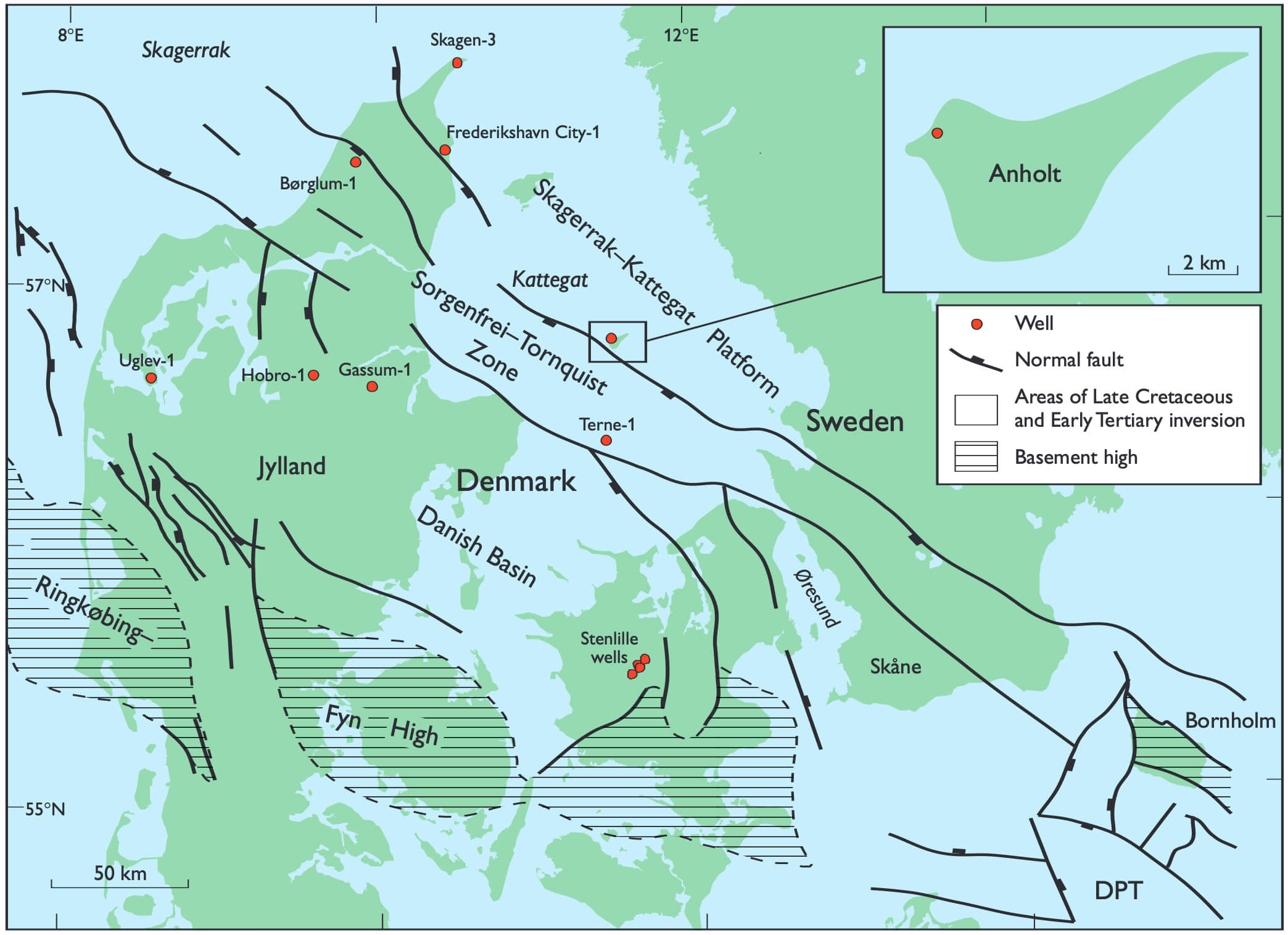
How to Cite
Share
Abstract
This study of Upper Pliensbachian – Bajocian/Bathonian deposits in a borehole drilled on the island of Anholt, Denmark incorporates sedimentology, biostratigraphy (palynomorphs and foraminifera), palaeomagnetism and coal petrology. The studied succession records a gradual change from marine inner shelf storm-influenced clays to mainly terrestrial sands, clays, and lignite containing a flora of mainly freshwater algae and pollen. The regression was initiated at the Pliensbachian–Toarcian boundary and marine influence ceased during Bajocian–Bathonian times; the regression thus took place earlier at Anholt than in the centre of the Danish Basin. The sediments in the Anholt borehole are referred to the Fjerritslev and Haldager Sand Formations. Although the Lower–Middle Jurassic boundary is commonly placed at the boundary between the two formations, our data indicate that at Anholt the upper Fjerritslev Formation (member F-IV) is of Aalenian age. The Lower–Middle Jurassic boundary occurs close to the boundary between members F-III and F-IV of the Fjerritslev Formation. In contrast to other Lower–Middle Jurassic successions in the North Sea region, smectites of inferred volcanic origin are preserved in the Anholt section, suggesting limited burial and hence less intense diagenetic illitisation or chloritisation of smectites. A down-hole increase in diagenetic influence is reflected by the increase down-section both in the thermal stability of kaolinite and in the vitrinite reflectance. Kaolinite of inferred authigenic origin forms a white powder in the quartz-dominated sands of the Haldager Sand Formation; this kaolinite is thermally very unstable and is interpreted to be of late diagenetic, post-uplift origin. The vitrinite reflectance data indicate that the Jurassic formations have been exposed to thermal maturation corresponding to burial to a depth of 1000–1200 m below their present depth. Post-maturation uplift of the order of 1 km probably occurred partly during Late Cretaceous – Paleocene inversion in the Kattegat area and partly during Oligocene–Recent regional uplift, the latter being the most important of the two uplift phases. Palaeomagnetic data indicate that the main carrier of magnetic remanence is fine-grained magnetite. The stable remanence shows a pronounced inclination shallowing, which is attributed to post-depositional compaction.
How to Cite
Share
Downloads
Editors: Jon R. Ineson and Finn Surlyk
The Jurassic rocks of Denmark and East Greenland record the evolution of two discrete portions of the Mesozoic rift complex, now separated by the North Atlantic Ocean. The Jurassic of Denmark and adjacent areas occurs mostly in the subsurface and research has thus focussed [...]










